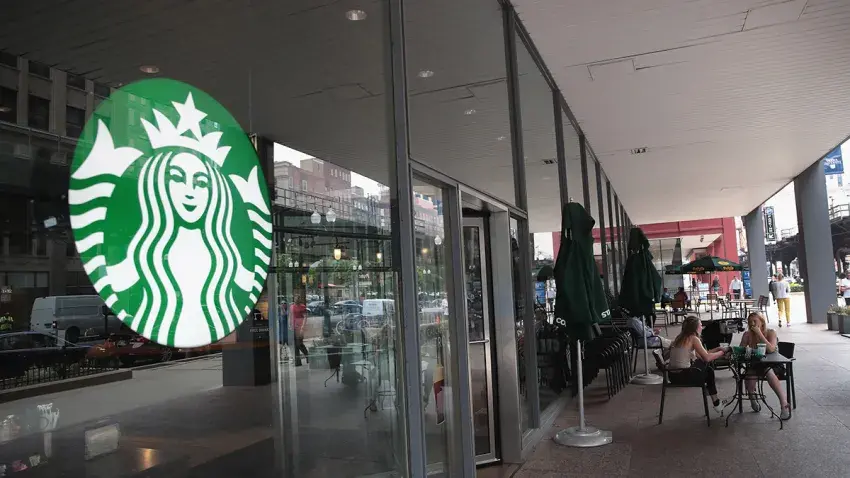Starbucks debuts fruity energy drink less than two months after Panera discontinued Charged Lemonade
Iced Energy drinks contain up to 205 milligrams of caffeine, significantly less than the controversial Charged Lemonade, but equal to about six cans of Coke.
Starbucks on Tuesday launched a drink in its stores nationwide called Iced Energy, which contains up to 205 milligrams of caffeine, about the same amount as six cans of Coke.
The fruity energy drink debuts less than two months after bakery and coffee shop chain Panera Bread announced it would discontinue its controversial Charged Lemonade, a drink to which lawsuits blamed two deaths and which it referred to as a “dangerous energy drink.”
Iced Energy comes in three flavors, including one that is only temporarily available through the Starbucks app. Its two in-store menu offerings, Melon Burst and Tropical Citrus, have a caffeine content of 180 milligrams to 205 milligrams, according to Starbucks. That’s more than a large Starbucks Caffe Latte, which has 150 milligrams of caffeine, but significantly less than Panera’s Charged Lemonade, which had 390 milligrams of caffeine when served in a large 30-fluid-ounce cup without ice.
Panera began phasing out Charged Lemonade on May 7 and has denied wrongdoing, saying it removed the drink as part of a broader menu transformation.
With the exception of its limited-edition Frozen Tropical Citrus Iced Energy with strawberry puree, Iced Energy is sugar-free and made with artificial sweeteners. All flavors are sold in Starbucks’ venti format, 24 fluid ounces only, and contain caffeine, vitamins and taurine, an amino acid common in popular energy drinks that has been touted as helping to improve exercise performance, although more studies are needed.
While taurine is not a stimulant, some animal studies indicate that its regular consumption in high doses may be harmful to the developing brains of adolescents.
Charged Lemonade, on the other hand, contained sugar and guarana extract, a stimulant that supposedly helps weight loss and improves cognition, but can be dangerous when taken long-term in large amounts.
A NEW SEGMENT FOR BEVERAGES
Charged Lemonade and Iced Energy are part of a growing category called “functional beverages” that chains large and small are eager to enter, experts say. These beverages contain ingredients that are said to improve health.
“You’re seeing the desire for functional beverages taking hold in many different beverage segments,” said Brian Warrener, director of the Center for Beverage Education and Innovation at Johnson & Wales University in Providence, Rhode Island, adding that nonalcoholic beverages.
Nonalcoholic cocktail elixirs are another huge growth area within functional beverages, he said. “Consumers believe there is some benefit.”
Starbucks’ new drink comes amid a slew of similar options elsewhere. In February, while Panera was recovering from multiple lawsuits over its Charged Lemonade, Dunkin’ introduced SPARKD’ energy drinks, fizzy energy drinks with guarana and taurine that come in peach and berry flavors and have up to 192 milligrams of caffeine. Smoothie King offers lemonade sodas that contain up to 125 milligrams of “natural caffeine” from green coffee beans.
The energy drink market as a whole has skyrocketed: as of mid-May, annual U.S. energy drink sales had risen to nearly $22 billion, up from about $13.5 billion at the end of 2019, according to Circana, a Chicago-based market research.
MORE CAFFEINE: HOW MUCH IS HEALTHY TO CONSUME?
And energy drinks have more caffeine than ever. Red Bull, which has been sold for decades, contains 114 milligrams of caffeine in a 12-fluid-ounce can, while many newer brands, including Celsius, contain 200 milligrams or more. Others, such as Bang, have 300 milligrams.
The Food and Drug Administration says healthy adults generally can consume up to 400 milligrams of caffeine per day, the equivalent of about four to five cups of coffee.
Starbucks’ menu has items that approach that level, such as the Big Blonde Hot Roast coffee, which has 360 milligrams. Of the three Iced Energy flavors it introduced, the limited-edition frozen beverage has the least amount of caffeine at 140 milligrams, according to nutritional information on Starbucks’ website.
While most adults can consume caffeine, the American Academy of Pediatrics says caffeine has no benefits for children and has specifically stated that adolescents should avoid energy drinks for health reasons.
A growing number of countries have banned the sale of energy drinks to children, with Russia being the latest country to take steps to stop sales to children under 18. In the United States, multiple state efforts to do the same have failed.
Starbucks’ Iced Energy is different from its soft drinks, popular caffeinated juices that contain about 30 milligrams or more of caffeine, slightly more than the amount in a can of Coke. Starbucks baristas have shared on TikTok that parents are not always aware that sodas contain caffeine when they order them for their children.
In response to a question about whether it would take steps to prevent children from drinking its new energy drinks, Starbucks said in an email Tuesday that it is “transparent with ingredients and nutritional information, so customers can choose what’s right for them.”
The coffee chain also said its venti Iced Energy drinks are similar in caffeine content to a large 16 fluid ounce Starbucks Cold Brew, which has 205 milligrams, and said ingredients and caffeine totals can be found on its website and app.

